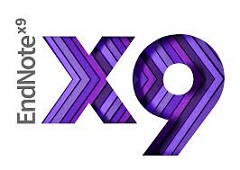There are a number of drug information resources, some available via subscription and some freely-available, that are now accessible both via Internet browser and via mobile apps.
For example:
- Lexicomp Online (Wolters Kluwer) which “provides access to the approved drugs and dosage forms used at Memorial Sloan Kettering (Hospital Formulary). The Pharmacy and Therapeutics Committee selects drugs for addition to the Hospital Formulary based on therapeutic efficacy, toxicity, and cost.” The Lexicomp mobile app can be downloaded at no charge.
- The Lexicomp clinical content can also be accessed from within UpToDate. Please note that as of 2019, the MSK Library’s subscription to UpToDate has been upgraded to UpToDate Anywhere, which allows for remote access to this resource. Users have the option to either install the UpToDate Mobile App (on up to two devices free of charge) or to use UpToDate’s Mobile Web (for which there is nothing to install).
- Micromedex (Truven) is an “evidence-based source for drug dosage, drug interactions, and side effects information”. Like Lexicomp Online, it also contains some patient education materials. The Micromedex app can also be downloaded to a mobile device.
- Drug Information Portal (National Library of Medicine) “provides a gateway to selected drug information from the U.S. National Library of Medicine (NLM) and other key U.S. Government agencies. Many foreign drugs and medications are also covered in the resource.” This resource does not have a downloadable app but it does have a specially-designed mobile site.
- Drug@FDA (Federal Drug Administration) “contains the list of FDA-approved oncology drugs and regulatory information”. The Drugs@FDA Express app can be downloaded.
Find out more about these tools and how they compare to each other from these articles from the library & information science literature:
Chatfield, Amy J.. “Lexicomp Online and Micromedex 2.0” Journal of the Medical Library Association : JMLA vol. 103,2 (2015): 112–113.
Patel, Risha I and Robert D Beckett. “Evaluation of resources for analyzing drug interactions” Journal of the Medical Library Association : JMLA vol. 104,4 (2016): 290-295.
Vaughan, K T L et al. “An evaluation of pharmacogenomic information provided by five common drug information resources” Journal of the Medical Library Association : JMLA vol. 102,1 (2014): 47-51.
If you have any questions about drug information resources or any other MSK Library databases, please feel free to Ask Us!
